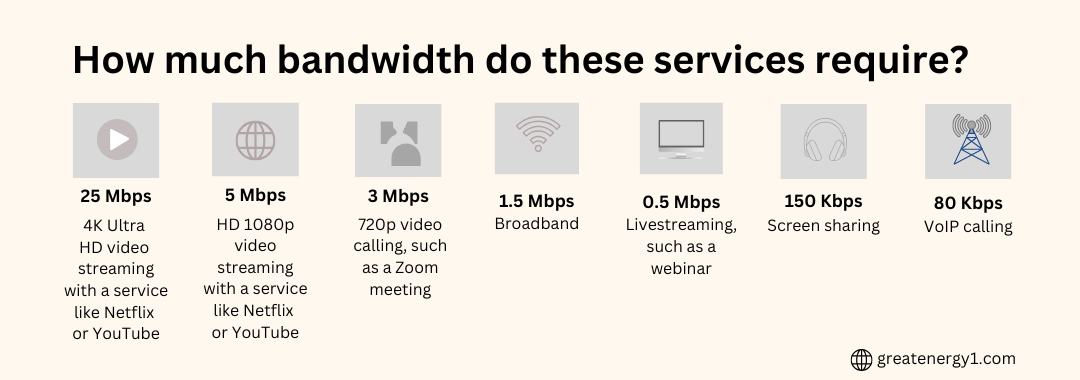Energy Bandwidth Clauses
Home » Energy Brokers » Energy Bandwidth Clauses
Everything You Need To Know About Energy Bandwidth Clauses
Understanding energy bandwidth clauses in supply contracts is essential for growing your energy broker business. Also known as usage swing, bandwidth refers to the range of energy consumption a customer is allowed under a fixed-rate contract without facing penalties from the supplier.
Get Quote
What Is Energy Bandwidth?
While people often confuse bandwidth with network speed, they’re different. Bandwidth is about capacity how much data can be transferred at once while speed refers to how fast that data moves. A better term for bandwidth is throughput, the actual rate at which data is successfully delivered.
Got Questions About Bandwidth? Let’s clear them up together!
How Is Bandwidth Enforced?
Energy suppliers enforce bandwidth rules based on the terms of their contracts. Suppliers adjust charges accordingly if customers use more or less energy than their agreed allotment.
- Using More Energy Than Allowed: If a customer exceeds their bandwidth limit, the supplier typically charges them the market price for the excess usage.
- Using Less Energy Than Allowed: If a customer consumes less energy than expected, the supplier may pass along additional costs they incur from reselling the unused energy back to the market.
These adjustments can lead to unexpected costs for consumers. One way to avoid bandwidth penalties is choosing an energy contract with a 100% bandwidth swing. This type of contract allows unlimited flexibility customers can use as much or as little energy as they need without extra charges. However, because suppliers take on more risk, 100% swing contracts usually have higher rates.
Working Of Bandwidth
Bandwidth refers to the amount of data a connection can send and receive at any time. Think of it like water flowing through a pipe the wider the pipe, the more water can pass through. Similarly, a higher-bandwidth connection can handle more data per second.
Wondering How Bandwidth Works? We’ve got an easy explanation just for you!
Bandwidth Vs. Speed
Many people use bandwidth and speed interchangeably, but they’re not the same. This mix-up is often fueled by internet service providers (ISPs), which advertise higher “speeds” when referring to increased bandwidth.
So, what’s the difference?
Speed
Bandwidth
Think of it like water flowing through a pipe. Speed is how quickly the water moves, while bandwidth is the size of the pipe determining how much water can flow through at a time. A bigger pipe (higher bandwidth) lets more water (data) pass through, but it doesn’t necessarily make the water move faster.
Why Bandwidth Matters
Physical constraints:
Network restrictions:
Since multiple devices share the same internet connection, bandwidth gets divided among them. High-usage devices like TVs streaming 4K video consume much more bandwidth than a simple webinar. While “speed” and “bandwidth” aren’t the same, having more bandwidth helps keep things running smoothly when multiple devices are connected.
Here’s a look at how much bandwidth different activities typically use:

Contact Us
Schedule a time to speak with one of our energy experts
Uses Of Bandwidth
1. Managing Network Traffic:
2. Bandwidth Throttling:
3. Improved Data Transfer:
4. System Bandwidth in Communications:
How To Measure Bandwidth
Considerations for Calculating Bandwidth
Wi-Fi vs. Mobile Bandwidth: What’s the Difference?
How to Calculate Bandwidth Requirements
- Identify the applications in use.
- Determine the bandwidth required for each application.
- Multiply each application’s bandwidth requirement by the number of simultaneous users.
- Add up all the application bandwidth requirements.

Need Help Understanding Energy Bandwidth Clauses?
Choosing the proper energy bandwidth clause can be tricky, but we’re here to help. With years of experience working with energy suppliers, we understand their financial models and know how to negotiate the best terms for you. Not all energy providers are the same, and we have the expertise to connect you with the best options in the U.S. Contact our team today to discuss your energy needs and explore how energy swing contract clauses can benefit your business!
Ready to Advance Your Career in Energy Brokerage with Great Energy 1?